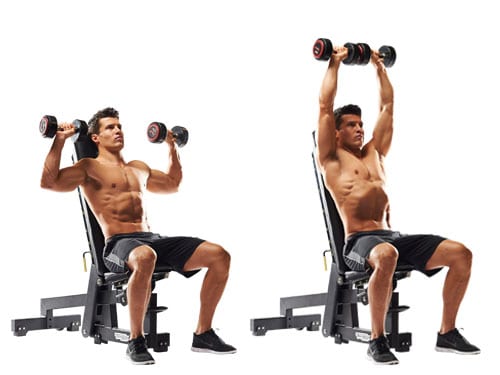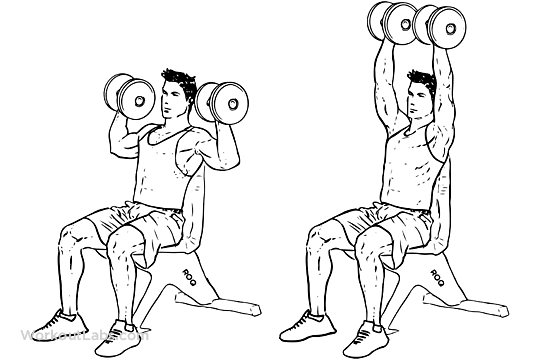By healthiergang writer , personal trainer.
Slow With Dumbbells
Before explaining the "slow dumbbell exercise" let's illustrate a bit of shoulder muscle anatomy.
The shoulder muscle is made up of three muscle heads such as:
- lateral head of the deltoid: whose main function is adduction of the arm from 0 ° to 90 °, anteversion and rotation, retroversion and external rotation;
- anterior head of the deltoid: whose function is that of adduction, anteversion of the arm and helps to keep the head of the humerus in its cavity;
- posterior head of the deltoid: whose function is that of adduction and lateral rotation.
Obviously we must not forget that these three muscles collaborate synergistically during the various movements. For example, during the adduction movement above 90 °, there is a greater activation of the muscles of the trapezius.
It is important to bear in mind that the posterior area of the shoulder is more indented than the anterior area and therefore, for this reason, it must be worked to compensate for this. It must also be remembered that the scapulohumeral joint is predisposed to dislocation and, therefore, the surrounding muscles perform the function of active ligaments.
This is why it is important to work the various muscles in a balanced way to avoid joint problems. Overly toned back and chest can lead to dislocations.

Slow with dumbbells: how is it done?
Let's now move on to deepen the exercise.
The slow forward with the dumbbells mainly engages the muscles: anterior head of the deltoid, part of the triceps and supraspinatus; in a secondary way they work: lateral and posterior head of the deltoid, chest, biceps and trapezius.
For correct execution, sit on a slightly inclined bench, grasp the dumbbells in a neutral position in front of the head with the thumb facing the face. Having assumed the correct position, push the dumbbells upwards keeping the elbows perpendicular (it is important to remember not to hyperextend the arm).
Reached the point of maximum extension, return to the starting position, at the height of the collarbone.
This is a great exercise for the anterior deltoid area, especially if you keep your elbows in a lateral-diagonal direction. If, on the other hand, the elbows are completely closed, therefore pointing totally forward, there is greater participation of the pectoral. It must be remembered that the anterior portion of the deltoid is trained more than the posterior area, especially due to the synergy it has with the other muscles, for example with the chest.

Therefore, in order to maintain a balance from a muscular and aesthetic point of view, you need to proportion your workouts well.
Common mistakes
The most common mistakes made when performing this exercise are:
- excessively arching the lumbar area;
- work more with the triceps;
- extending the arms excessively;
- closing the elbows too much;
- keeping the elbows too open;
- use an excessive load.
Variations of the slow with dumbbells
Some variations to the basic exercise are:
- Slow forward on an inclined bench: the execution is the same as the basic exercise but in this case the bench is tilted and the stretch is done diagonally; great for working the anterior deltoid area, especially using less load and stretching sets. It is important to pay attention to the direction of execution especially when it comes to muscle exhaustion, this because there is a tendency to verticalize the movement.
- Slow forward with rotation or arnold press: exercise named after Arnold Schwarzenegger. We start with the palms of the hands facing the shoulders; during the execution, as the arms are extended upwards, the arm and forearm are also rotated until reaching the end with the classic position. Theoretically, this exercise was created to work all three heads of the deltoid, even if the front and side heads are increasingly stimulated.
- Slow forward to the multipower elbows closed: position equal to the basic exercise but in this case performed at the multipower. The bench is always slightly inclined and the head should be positioned slightly further from the barbell. Execution is the same as slow with dumbbells.
- Slow forward with the Ez Bar: it is the same as the multipower exercise but in this case it is performed free with the ez bar (either standing or sitting on a bench, even if standing up stresses the back more). Always keep your elbows slightly open, remembering that if you close your arms too much, you have a greater activation of the pectoral muscle. Push the barbell up, going slightly diagonally and not completely perpendicular to the ground.


























